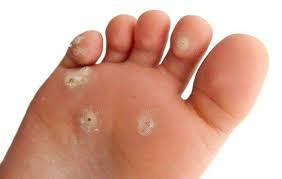Warts, those unwelcome guests on our skin, are a common concern in dermatology for many. While they are generally harmless, their appearance can often cause discomfort. Understanding the various treatment options available is the first step toward addressing this skin issue effectively. This guide explores different approaches to managing warts, from accessible over-the-counter remedies to professional dermatology procedures. Consulting a qualified healthcare provider for advice is always recommended, especially for persistent or problematic warts.
Salicylic Acid for Wart Treatment
Salicylic acid is a standard over-the-counter treatment for warts, working by softening the layers of skin that form the wart, allowing them to be gradually peeled away. It is typically available as gels, liquids, pads, or plasters applied directly to the wart daily, following the product instructions. For best results, experts recommend soaking the wart in warm water beforehand to soften the skin and enhance the acid’s penetration. While this treatment can reduce the size and visibility of warts over time, it requires consistent application and may take weeks or even months to show visible results.
Cryotherapy as a Professional Option
Healthcare providers in dermatology often perform cryotherapy to freeze and remove warts. This treatment uses liquid nitrogen to freeze the wart tissue, causing it to die and eventually fall off.
- Procedure: A spray or cotton-tipped applicator applies liquid nitrogen to the wart. Depending on the wart’s size and location, this process may need repeated over multiple visits.
- Effectiveness: Cryotherapy often produces quicker results compared to at-home treatments, with many individuals noticing a reduction in wart size after one or two sessions.
- Key Factors: Mild discomfort during the procedure or temporary skin discoloration may occur for some patients.
Cryotherapy is particularly effective for larger warts or those resistant to over-the-counter treatments. Consulting a dermatology professional allows for precise application and effective results.
Duct Tape Occlusion Method
Among unconventional yet researched options, the duct tape occlusion method has gained attention for its accessibility, simplicity, and cost-effectiveness. This involves applying a piece of duct tape to the wart for six days, followed by removing it, soaking the wart in warm water, and gently filing the surface to remove dead skin. The cycle is repeated until the wart disappears, which can take several weeks. While evidence on its effectiveness is mixed, some studies suggest it works in certain cases by stimulating the immune system to fight the virus causing the wart. Although results can vary from person to person, it remains a popular, low-cost, non-medical approach that many are willing to try.
Start Your Dermatology Wart Treatment Today!
There are many ways to address warts, each with its factors to keep in mind. Individuals can choose what works best, from over-the-counter treatments like salicylic acid to professional options like cryotherapy. Unconventional methods like duct tape occlusion also expand the options for wart removal. Consulting with a healthcare provider is paramount, particularly when faced with persistent, spreading, or painful warts. Medical professionals can provide personalized advice and recommend a treatment plan tailored to the condition. Exploring these options equips individuals with the knowledge they need to take the next step toward managing warts effectively.

Leave a Reply